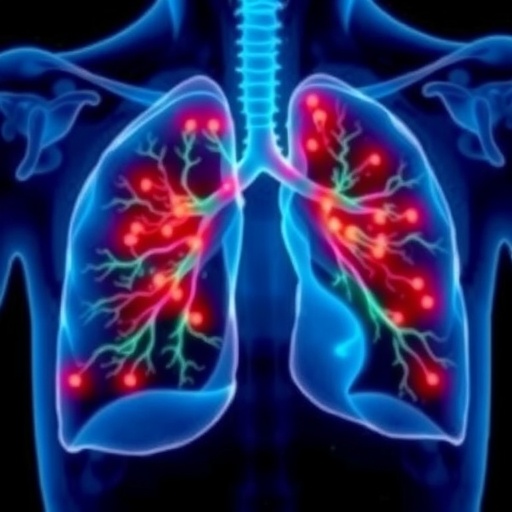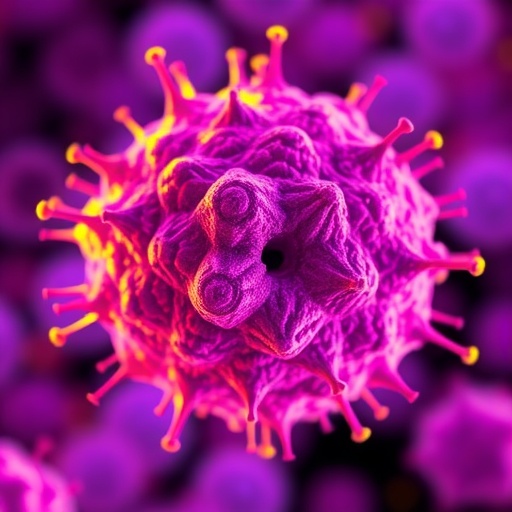In recent years, the field of oncology has witnessed rapid advancements, particularly in the domain of personalized medicine and predictive analytics. One of the most promising developments is the integration of radiomics, a technique that extracts a vast amount of in-depth information from medical imaging. In a groundbreaking study led by Mehri-kakavand, Mdletshe, Amini, and their colleagues, the potentials of multimodal radiomics fusion have been investigated, specifically in predicting postoperative recurrence for patients with non-small cell lung cancer (NSCLC). This significant research, documented in the Journal of Cancer Research and Clinical Oncology, proposes to enhance prediction accuracy and patient management strategies in this challenging area of cancer treatment.
Non-small cell lung cancer is known for its aggressive nature and high rates of recurrence following surgical interventions. Traditional methods of prognosis often rely heavily on histopathological evaluations, which can only offer a limited view of the tumor characteristics. With the introduction of radiomics, researchers are now capable of quantifying various features from imaging data such as computed tomography (CT) or magnetic resonance imaging (MRI). These features can potentially offer insights into the tumor microenvironment, thereby allowing oncologists to tailor more effective treatment plans for individuals.
The study by Mehri-kakavand et al. brings a fresh perspective to the table by not just using a single imaging modality but instead combining multiple types of imaging data. This multimodal approach allows for a comprehensive analysis, leveraging the strengths of each imaging technique. For instance, while CT may provide detailed anatomical information about the tumor’s location and size, MRI can offer insights into the tumor’s metabolic activities, thereby presenting a more nuanced understanding of its behavior.
One of the critical advantages of radiomics lies in its non-invasive nature, permitting repeated assessments without putting the patient at significant risk. This aspect is especially relevant in NSCLC, where monitoring for recurrence can significantly influence subsequent treatment decisions. The study emphasizes that integrating information from different imaging modalities could lead to improved models for predicting which patients are more likely to experience a recurrence after surgery.
Adopting machine learning algorithms is another innovative aspect of this research. By applying these advanced computational techniques to the collected radiomic data, researchers can uncover complex patterns that may not be visible to the human eye. This capability is vital for establishing correlations between radiomic features and clinical outcomes, which ultimately can guide oncologists in making more informed prognostic assessments.
Furthermore, the research identifies several key radiomics features that showed a significant correlation with postoperative outcomes in NSCLC patients. Among them were texture and shape parameters that can reflect tumor heterogeneity and aggressiveness. Such insights could help oncologists differentiate between patients who might benefit from adjuvant therapies and those who could be observed more conservatively post-surgery.
While the empirical findings of the study are staggering, it also provides a deeper understanding of the biological underpinnings of NSCLC. The researchers assert that by integrating multimodal radiomics, it is possible to better characterize the tumor’s interaction with its microenvironment, a factor known to influence both treatment response and recurrence rates. Understanding these interactions is crucial for developing strategies that enhance the efficacy of existing therapies and potentially lead to the introduction of novel therapeutic targets.
The promise of multimodal radiomics fusion extends beyond just improved accuracy in recurrence predictions; it also holds potential for developing real-time monitoring systems. Such systems would allow for the dynamic assessment of treatment responses, enabling oncologists to adjust treatment protocols proactively. This could potentially lead to improved survival outcomes, reduced treatment-related morbidity, and an overall enhancement in the quality of life for NSCLC patients.
However, despite the encouraging results of the study, it is essential to note that implementing such advanced methodologies into routine clinical practice will require overcoming several hurdles. Standardization of imaging protocols and radiomic feature extraction methods is critical for ensuring that findings are reproducible across different clinical settings. Additionally, regulatory approval and consensus on the use of machine learning models in a clinical environment will be paramount.
Moreover, the study opens avenues for future research exploring how multimodal radiomic approaches could be applied to other types of cancers. Since cancer is a heterogeneous disease with various subtypes, a similar fusion of different imaging modalities might yield insightful discoveries across a broader spectrum of malignancies.
In conclusion, the research by Mehri-kakavand et al. is a notable stepping stone in the ongoing quest to improve cancer prognostication and management. By harnessing the power of multimodal radiomics fusion, oncologists can potentially change the clinical landscape for NSCLC patients, paving the way for personalized treatment approaches that consider the intricate relationship between tumor biology and treatment outcomes. With further research and validation, these findings could lead to a transformative impact on patient care in oncology, reinforcing the notion that data-driven medicine might be the future of cancer treatment.
Subject of Research: Integration of multimodal radiomics for predicting postoperative recurrence in NSCLC patients.
Article Title: Multimodal radiomics fusion for predicting postoperative recurrence in NSCLC patients.
Article References:
Mehri-kakavand, G., Mdletshe, S., Amini, M. et al. Multimodal radiomics fusion for predicting postoperative recurrence in NSCLC patients.
J Cancer Res Clin Oncol 151, 261 (2025). https://doi.org/10.1007/s00432-025-06311-w
Image Credits: AI Generated
DOI: 10.1007/s00432-025-06311-w
Keywords: Multimodal radiomics, non-small cell lung cancer, postoperative recurrence, machine learning, predictive analytics.
Tags: cancer imaging techniquesenhancing cancer treatment strategieshistopathological evaluation limitationsimaging data analysis in oncologyJournal of Cancer Research and Clinical Oncology studymultimodal radiomics in cancer treatmentnon-small cell lung cancer recurrence predictionpersonalized medicine advancementspostoperative management of NSCLCpredictive analytics in oncologyrevolutionary fusion techniquetumor microenvironment insights





